Life on Earth
Climate change impact on ecosystems
%
of the world's coral reef have already been damaged beyond repair
%
of the decline in biodiversity is caused by habitat destruction
%
of the known species risk extinction if global temperature rises by more than 3,5C
%
loss rate of world's mangroves during the last 20 years
%
polar bear population loss from 2001 to 2010
Source: wwf.panda.orgHuman made greenhouse gas emissions drive both; climate change and ocean acidification.
Both factors threaten the natural equilibrium of the planet ecosystems.
The biosphere is composed of living organisms (biota) and the abiotic (nonliving) factors from which they derive energy and nutrients. This is a relatively thin stratum of Earth’s surface that supports life, it goes from a few kilometres into the atmosphere to the deep-sea vents of the ocean.
Changes in the biosphere due to climate change can be profound and, in recent years, have become increasingly observable.
Ecosystems are rapidly changing responding to climate change and other global change drivers, not only responding to temperature changes but also associated changes in precipitation, atmospheric carbon dioxide concentration, water balance, ocean chemistry, and the frequency and magnitude of extreme events. Changes in natural ecosystems threaten biodiversity worldwide and have implications for global food production.
Scientists predict that on our current tempo of habitat loss and global warming, between one-third and one half of all species will face extinction by the end of this century.
Biodiversity is based on the relationships between living things; species, their ecosystems, and the ecological processes between them. Warming temperatures change and species loss will change the equilibrium of ecosystems and alter these relationships. Not all species are going to be able to adapt quickly enough to changes in their environment.
Some examples
Earlier arrival of spring changes the life cycles of many plants that provide food and habitat for other species
Changing life cycles of dependent species risk “phenological mismatches”, for example migratory species arriving to late for dinner, when their prey has passed.
Invasive species, moving from south to north to adapt to climate change, can bring diseases, compete for resources or alter the balance of northern ecosystems.
Droughts harm the growth of natural grasslands in prairie ecosystems, affecting its habitants
Warming water favor harmful algae growth in aquatic ecosystems, affecting the life on them.
Corals, one of the most biodiverse ecosystems, are among the most rapidly declining species groups due to mass bleaching, disease and die-offs caused by rising ocean temperatures, as well ocean acidification.
Though climate change is not the only factor responsible for diversity loss, it is important to notice how biodiversity and climate change have common human made causes. Appropriate policies to mitigate climate change are also effective to reduce loss of biodiversity.
The main five threats to biodiversity
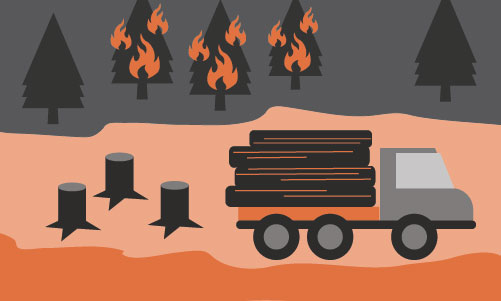
LAND AND SEA USE CHANGE
Common changes in use are caused by unsustainable agriculture, logging, transportation, residential or commercial development, energy production and mining.

SPECIES OVEREXPLOITATION
Direct overexploitation refers to unsustainable hunting and poaching or harvesting, whether for subsistence or for trade. Indirect overexploitation occurs when non-target species are killed unintentionally, for example as bycatch in fisheries.

INVASIVE SPECIES AND DISEASE
Compete with native species for space and resources; sometimes spread disease that native species have no immunitiy of.
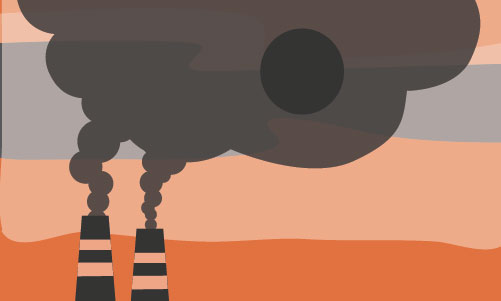
POLLUTION
Pollution can directly affect a species by making the environment unsuitable for its survival (this is what happens, for example, in the case of an oil spill). It can also affect a species indirectly, by affecting food availability or reproductive performance, thus reducing population numbers over time.
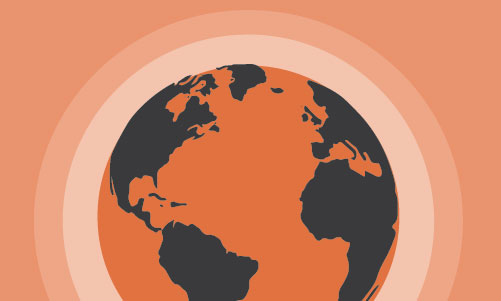
CLIMATE CHANGE
The effects of climate change on species are often indirect. As temperatures change, some species will need to adapt by shifting their range to track a suitable climate. The effects of climate change on species are often indirect.
Source: WWF Living planet reportAccording to the IUCN Red List, more than 37,400 species are threatened with extinction.
That is still 28% of all assessed species. The climate crisis is accelerating this trend by changing habitats, in some cases radically: through droughts, floods or a drop in water temperature.

%
AMPHIBIANS

%
MAMMALS

%
BIRDS
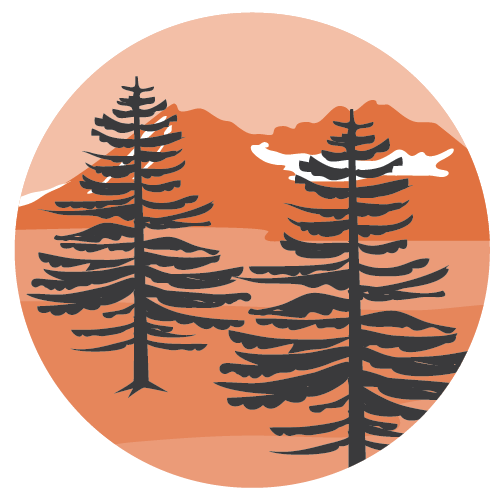
%
CONIFERS
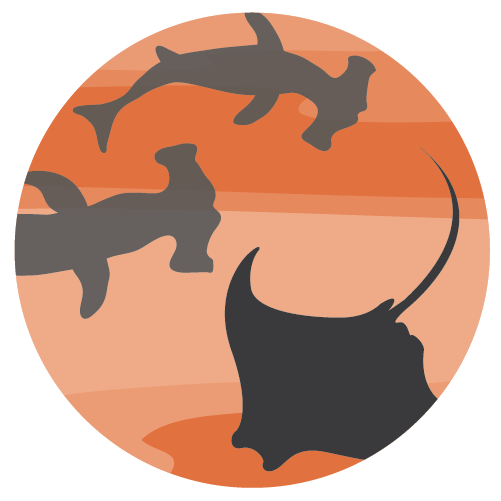
%
SHARKS and RAYS

%
REEF CORALS

%
SELECTED CRUSTACEANS
The IUCN Red List
Established in 1964, The International Union for Conservation of Nature’s Red List of Threatened Species has evolved to become the world’s most comprehensive information source on the global conservation status of animal, fungi and plant species. The IUCN Red List is a critical indicator of the health of the world’s biodiversity.
Forest are part of the solution!
Halting the loss and degradation of forest ecosystems and promoting their restoration have the potential to contribute over one-third of the total climate change mitigation that scientists say is required by 2030 to meet the objectives of the Paris Agreement.
What to do:
Combatting deforestation and forest degradation in areas of high biodiversity. Tropical forests have been one of Earth’s best defenses against rising carbon dioxide levels. Its degradation is debilitating this role.
Restoring forest landscapes helps enhance climate change mitigation and adaptation.
Community involvement in land-use decisions. Strengthen community control over forests, alleviate poverty, empower women and men, enhance biodiversity, and sustainably manage forests.
Unlocking forest benefits is critical to a sustainable and equitable supply of forest goods and services.
Source: www.iucn.org

About this website
Hi, I’m Andrea, a Graphic and Web designer based in Germany.
This website is part of my graduation Master’s degree project (Audiovisual Arts Computer), where my research question was:
“How can designers and visual communicators contribute to transmit scientific knowledge and facts to a non-expert public in an understandable and relevant way, to generate awareness, motivate reflection and behavioral change.”
You can see the paper here:
Understanding climate change – Visual communication for scientific facts






